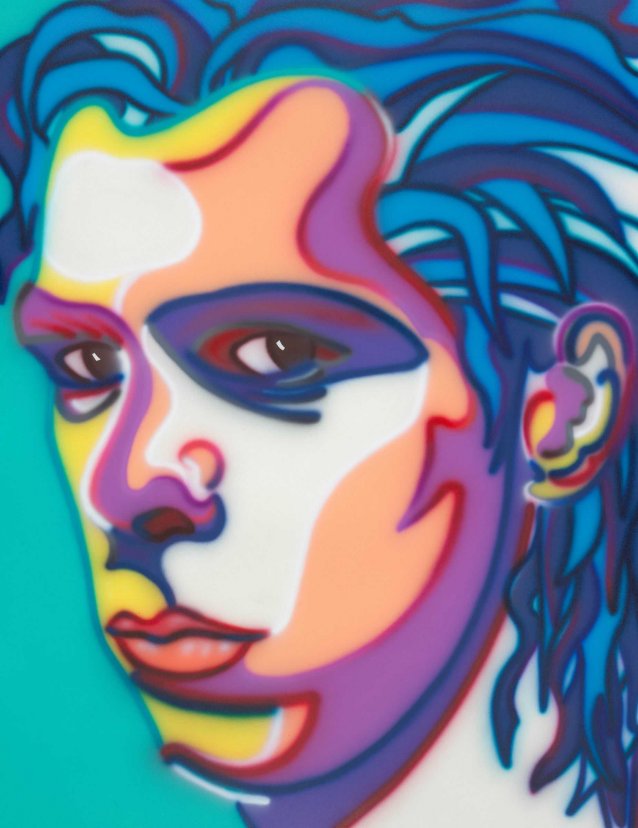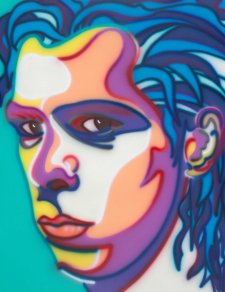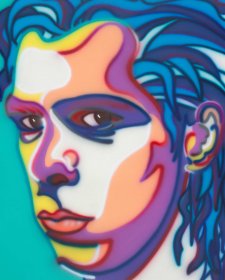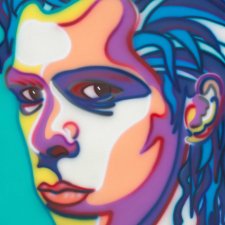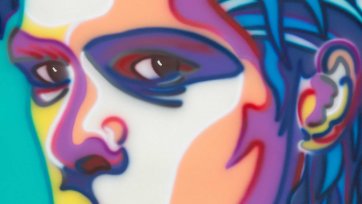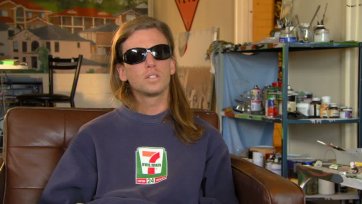Today we will LOOK at the portrait of Nick Cave by Howard Arkley; THINK about the artist-sitter relationship; WATCH a video interview with artist Marc de Jong; READ about portrait commissions; DO a couple of activities and finish with a quiz.
The relationship between artist and sitter is at the heart of portraiture. One of the National Portrait Gallery’s first commissions, Howard Arkley’s painting of Nick Cave exemplifies the way in which a daring or unexpected pairing of artist and sitter can yield potent results. Arkley was known for his distinct, vivid depictions of otherwise prosaic suburban homes and interiors. His portrait of Cave was one of the last pieces of work the artist completed before his death, at the peak of his career. Today we explore how Arkley employed the neon colours and contours of his instantly recognisable style in the creation of a similarly unique vision of musician Nick Cave. (Spelunking is exploring caves.)
